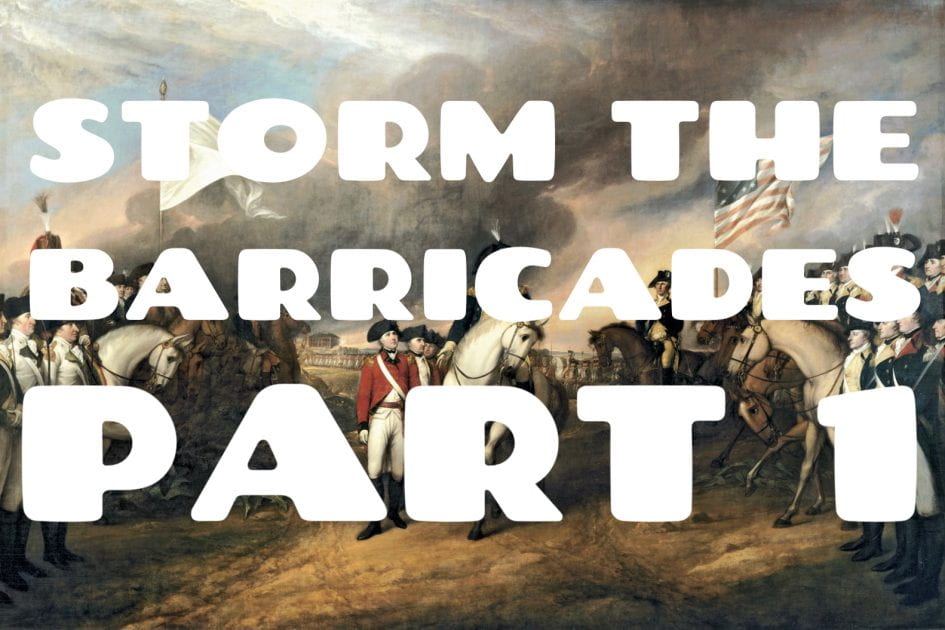Usually the only posts I write on here are to bring a project to an end, but with the amount of work we are doing, I will be writing what I learned half way through the course of the project. Having said that, lets dive in and see what the past week has looked like.
As you may know, our opening project was called “Running a Remake” but of course it was time for a change and thats where we are now. We’ve found ourselves learning about revolutions and the significance that comes after, and the driving questions being “how do revolutions transform societies?” Before we could start going in depth, we had to know, what exactly is a revolution?
Now that the most basic question had been answered, we could start looking ahead and seeing what’s to come. To start our whole revolution unit off, we got told of a man named Crane Brinton, this guy had a theory that revolutions were like a disease and had four stages to them, starting off with the Incubation or in other words, the Old Order. In this phase middle class are upset because there is a corrupt government and an inept ruler. So the intellectuals decide to speak out which leads into phase two, thr First Stage; there is now a financial breakdown of the government so the middle class start to protest while the government tries to stop but eventually they make the old government step down and introduce a new one lead by moderates. Then the Crisis Stage comes along where radicals aren’t happy about the changes so they violently overthrow the moderates and take control, everything is out of control which then leads the the fourth and final phase, the Recovery; the reign of terror ends and a new government is put in place then slowly returns to quieter times. We took notes from a lecture that our teacher led, this was the first time that I’ve properly taken notes and as much as I hate doing it, they have been very helpful. His theory really helped me understand the basics of what revolutions are like, however not every revolution follows this theory.
It was time to move on to the first milestone where we know got to build something called a Rube Goldberg Machine. We had to somehow represent Crane Brinton’s theory of a revolution using metaphors by making a machine that executes a simple task. My group of Randy, Nathan and Indira came up with a plan that in our heads, shows his theory quite well. The next day came and it was time to build, we also got told we had to create a storyboard so two of us did that while the other two got their hands dirty building. It seemed to have gone well until we saw the time, we were already nearing the end of the day and still hadn’t finished building, let alone filming and editing the video. So unfortunately we didn’t quite finish with the amount of time we had. Since we were making another variation of this machine, we had to manage our time better so we could finish in time.
Our next variation wasn’t solely based on Crane Brinton’s theory, however it was the American Revolution so before we could build our machine, we need to learn about what happened in that revolution. We had another lecture and yet again took more notes but we also watched a short video meant for children, when we watched it as a class I wasn’t fully listening because it was some childish video representing the American Revolution in a song, but when I watched it for the second time, it surprisingly it contained a lot of information.
It was time to create the second variation of our machine but this time instead of just representing Crane Brinton’s theory, we had to do that as well as the American Revolution. For the most part it went well, this time we switch roles and I created the storyboard and I learnt that story boarding is actually very important. All this time I’ve been thinking it’s a waste of time but now I finally see where the teachers are coming from. Once I completed the storyboard we were all working on building and this time we finished the building part and would’ve completed the video as well if it we didn’t have to complete our first variation before we could start on the second. Even though it’s not fully finished, this time went much better, the machine works and looks nicer and the storyboard accurately shows what each shot will look like.
This has been a very in depth, and complicated project so far but I’m learning a lot. In another week our project will be coming to a close so you’ll have to wait until then to see what else is coming.





Leave a Reply